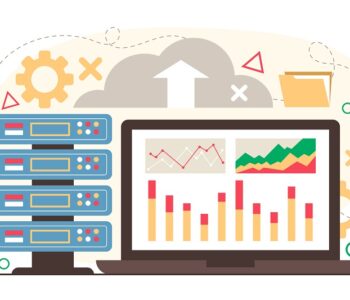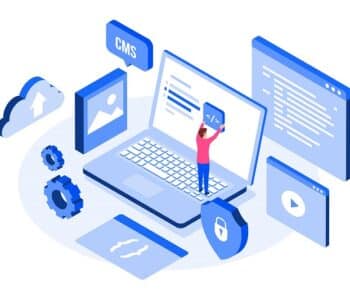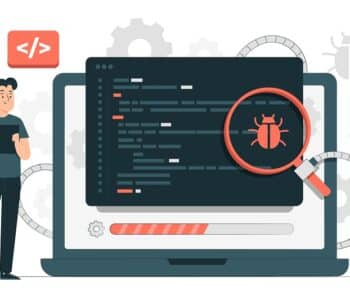 Healthcare
Healthcare Navigating Patient Information Security in Healthcare: A Software Solution…
In the rapidly evolving landscape of the healthcare industry, leaders grapple with a myriad of challenges, with patient information security emerging as a paramount source of frustration. This concern is not unfounded, and several key factors contribute to the complexities surrounding the safeguarding of patient data.
Firstly, the sheer volume of sensitive information generated and stored in healthcare systems is staggering. Electronic Health Records (EHRs), containing details about medical history, diagnoses, treatments, and personal identifiers, are a treasure trove for cyber attackers. The expansive scope of these records poses a significant challenge in maintaining a robust defense against unauthorized access and data breaches.
Secondly, the interconnected nature of modern healthcare systems amplifies the vulnerability of patient information. As medical facilities increasingly adopt interconnected technologies for streamlined workflows and improved patient care, the risk of security breaches rises. Interoperability between different systems and devices creates potential entry points for cyber threats, requiring comprehensive solutions to ensure data integrity across the healthcare ecosystem.
Thirdly, the evolving regulatory landscape adds another layer of complexity to patient information security. Healthcare organizations must navigate a maze of compliance standards, such as the Health Insurance Portability and Accountability Act (HIPAA) in the United States, to avoid legal consequences and protect patient privacy. Staying abreast of these regulations and implementing corresponding security measures becomes a challenging task for healthcare leaders.
Moreover, the rise of telemedicine and mobile health applications introduces additional vulnerabilities. The convenience of remote healthcare services comes with the challenge of securing data transmitted and stored outside traditional healthcare settings. Ensuring the confidentiality and integrity of patient information in the realm of virtual consultations and mobile health apps requires innovative security measures tailored to the unique demands of these platforms.
In addressing these challenges, cutting-edge software tools play a pivotal role. Advanced encryption algorithms, multi-factor authentication, and AI-driven threat detection systems are among the technological solutions that can bolster patient information security. By adopting a proactive approach to cybersecurity and leveraging state-of-the-art tools, healthcare leaders can mitigate the risks associated with evolving industry challenges and safeguard the sensitive data entrusted to their care. As the healthcare landscape continues to transform, the imperative to prioritize and invest in robust patient information security measures becomes increasingly evident.
Among the top concerns for healthcare leadership, patient information security stands out as a paramount frustration. In this blog post, we’ll delve into the top 5 reasons for this frustration and explore how cutting-edge software tools can provide robust solutions. The level of frustration is indicated as a rating with 10 indicating the highest and 1 indicating the lowest.
1. Cybersecurity Threats on the Rise
- Frustration Level: 9/10
The exponential growth of cyber threats poses a significant risk to patient information security. Ransomware attacks and data breaches have become increasingly sophisticated, putting sensitive healthcare data at substantial risk.
Solution: Implementing advanced cybersecurity software tools with encryption algorithms, multi-factor authentication, and intrusion detection systems can fortify the defense against evolving cyber threats. Regular security audits and updates are crucial to staying one step ahead.
2. Compliance Complexities (e.g., HIPAA)
- Frustration Level: 9/10
The labyrinth of healthcare regulations, including the stringent requirements of HIPAA, adds complexity to safeguarding patient information. Navigating compliance while ensuring efficient healthcare operations can be a significant challenge.
Solution: Develop compliance management software that automates tracking, reporting, and auditing processes. This ensures adherence to regulatory requirements, streamlining the compliance burden and minimizing the risk of non-compliance penalties.
3. Insider Threats and Human Error
- Frustration Level: 8/10
Human error and insider threats from employees within healthcare organizations contribute to security breaches. Whether unintentional mistakes or malicious actions, these incidents can compromise patient information.
Solution: Implement role-based access controls and conduct regular training programs for healthcare staff on cybersecurity best practices. Additionally, deploy software tools for continuous monitoring and real-time alerts to detect and prevent unauthorized access.
4. Inadequate Data Encryption Practices
- Frustration Level: 8/10
Insufficient data encryption practices leave patient information vulnerable during storage and transmission. The lack of robust encryption measures can expose sensitive data to unauthorized access.
Solution: Integrate encryption tools into the healthcare IT infrastructure to protect data at rest and in transit. This ensures that even if a security breach occurs, the data remains encrypted and unreadable to unauthorized users.
5. Evolving Technological Landscape
- Frustration Level: 7/10
The rapid evolution of technology introduces new challenges in securing patient information. Integrating emerging technologies, such as IoT devices and cloud solutions, without compromising security becomes a delicate balancing act.
Solution: Stay ahead of the curve by adopting advanced security solutions that are designed to accommodate the integration of emerging technologies securely. Regularly update and adapt security protocols to align with the latest technological advancements.
In conclusion, patient information security concerns are not insurmountable. Leveraging state-of-the-art software tools is a proactive approach to mitigating these frustrations and ensuring the confidentiality and integrity of healthcare data. As we navigate the complex landscape of healthcare cybersecurity, let’s empower organizations with the tools they need to protect the trust placed in them by patients.























